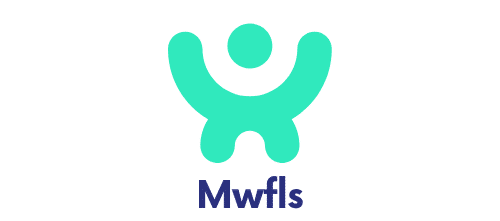Hypertension, otherwise known as high blood pressure, is a health issue that millions worldwide grapple with daily. It puts individuals at a significantly greater risk for heart disease and stroke, the leading causes of death globally. Management of hypertension often involves medication, but did you know dietary changes can also make a significant impact? This article explores the DASH diet, Dietary Approaches to Stop Hypertension, and how it can assist in managing high blood pressure.
Understanding Hypertension
Before we delve into the DASH diet, it’s essential to understand what hypertension is and why it’s a concern. Hypertension is a medical condition where the force of blood against artery walls is consistently too high. Over time, this unrelenting pressure damages the blood vessels, leading to severe health risks such as heart disease and stroke.
Dans le meme genre : What Dietary Adjustments Can Alleviate Acid Reflux Symptoms?
Hypertension is often linked with high levels of sodium in the diet. Sodium, found mainly in salt, can increase blood pressure by holding excess fluid in the body, creating an added burden on your heart. This makes dietary interventions, like the DASH diet, a crucial component of blood pressure management.
The DASH Diet: An Overview
The DASH diet is a dietary plan that emphasizes eating foods low in sodium but high in nutrients known to lower blood pressure—namely potassium, calcium, and magnesium. Originally developed by the National Heart, Lung, and Blood Institute (NHLBI), the DASH diet has been scientifically proven to reduce high blood pressure within weeks of starting the diet.
En parallèle : The science of happiness: what really makes us happy?
The plan focuses on increasing intake of fruits, vegetables, whole grains, and low-fat dairy foods while reducing portions of foods high in saturated fat and cholesterol, such as red meat, sweets, and beverages high in sugar. The DASH diet also encourages the consumption of nuts, legumes, poultry, and fish.
How the DASH Diet Lowers Blood Pressure
The DASH diet works by encouraging the consumption of foods that contribute to heart health. Its low sodium, low fat, and high fiber content can significantly reduce blood pressure.
Foods rich in potassium, calcium, and magnesium, which the DASH diet encourages, help to relax blood vessels, reducing the risk of hypertension. More specifically, potassium helps to balance the amount of sodium in cells, a critical process in maintaining normal blood pressure levels. Calcium is necessary for blood vessels to tighten and loosen when needed, and magnesium aids in this process as well.
The low fat content in the DASH diet also plays a key role in managing high blood pressure. By reducing the intake of saturated fats and cholesterol, the diet lowers the risk of plaque build-up in arteries, which can lead to heart disease and stroke.
Implementing the DASH Diet
Incorporating the DASH diet into your daily routine doesn’t have to be a daunting task. It is about making gradual changes and sensible choices. The NHLBI recommends aiming for about 2,000 calories a day, with 6-8 servings of grains, 4-5 servings each of fruits and vegetables, 2-3 servings of dairy, and less than 2,300 mg of sodium per day.
To help achieve these targets, it may be useful to start by adding an extra serving of fruit or vegetables each day or swapping out a meat-based meal for a plant-based one. Reducing the amount of processed foods in your diet, which are often high in sodium, is another important step.
Remember, the DASH diet is not about deprivation, but about balance. It encourages a broad range of foods, providing essential nutrients and promoting overall health.
The Proven Benefits of the DASH Diet
Studies have consistently shown the beneficial effects of the DASH diet on blood pressure. One study published in the Archives of Internal Medicine found that adults who followed the DASH diet had significantly lower blood pressure after just two weeks. Another study in the American Journal of Clinical Nutrition found that the DASH diet, combined with low salt intake, was as effective as medication for some people with mild hypertension.
But the benefits extend beyond blood pressure management. The DASH diet is also associated with a lower risk of heart disease, stroke, and some types of cancer. It can aid in weight loss and promote overall health.
Following the DASH diet can make a substantial difference in managing your heart health and lowering the risk of hypertension. And it’s never too late to start making healthy changes. With its emphasis on a variety of nutrient-rich, low sodium foods, the DASH diet proves that what’s good for your heart can also be delicious. So, take the first step today towards a healthier heart, and incorporate the DASH diet principles into your daily eating habits.
The DASH Diet: A Systematic Review and Meta-Analysis
Over the years, multiple scientific studies have focused on determining the effectiveness of the DASH diet in managing blood pressure. A systematic review and a meta-analysis of these studies offer collective evidence of the diet’s benefits.
One comprehensive systematic review conducted by Mayo Clinic found that the DASH diet significantly lowered systolic blood pressure (SBP) and diastolic blood pressure (DBP). The study concluded that a DASH eating plan, combined with a low sodium intake, was particularly beneficial for people with hypertension.
Another meta-analysis published in the American Journal of Preventive Medicine found that the DASH diet predominantly reduced blood pressure in individuals with pre-hypertension or stage 1 hypertension. The results of this study highlighted the potential of the DASH diet as a first-line, non-pharmacological treatment strategy for these individuals.
Moreover, these studies underlined the importance of portion control in the success of the DASH diet. Consuming the recommended servings per day of fruits, vegetables, whole grains, and low fat dairy is crucial to reap its benefits.
These research findings strongly support the DASH diet as a powerful tool in hypertension management and prevention of cardiovascular disease. But keep in mind that any dietary changes should be discussed with your healthcare provider to ensure they fit your individual health needs.
Conclusion: Taking Control of Your Diet to Manage Hypertension
When it comes to managing high blood, the DASH diet’s role cannot be overstated. It is a well-researched and practical approach to eating that can help reduce hypertension and promote heart health.
The DASH diet, by encouraging the consumption of fruits, vegetables, whole grains, and low fat dairy products, provides a comprehensive and balanced eating plan. It not only helps lower blood pressure but also reduces the risk of cardiovascular disease and other health issues.
The essence of the DASH diet is not about drastic changes but about making smart, sustainable choices. By gradually incorporating these principles into your diet, you’re not just eating healthier – you’re taking a proactive step towards managing hypertension.
Remember, while the DASH diet is a powerful tool, it’s most effective when combined with other lifestyle changes such as maintaining a healthy weight, regular exercise, and reducing alcohol and tobacco use.
In conclusion, by embracing the DASH diet, you are taking control of your health, one meal at a time. Start today, and take a step towards a healthier heart and a healthier you.
















